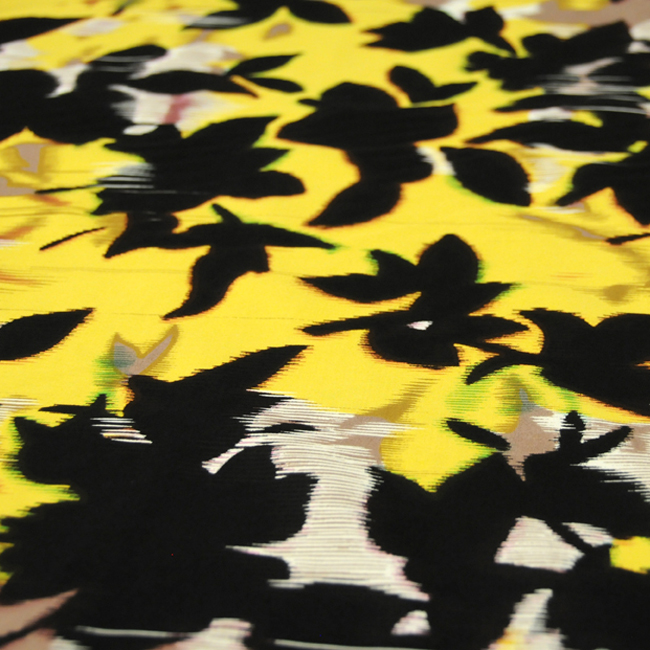Silk Fabric Organization Center
From Heart of New York City's Fashion District
SILK PRINTED FABRIC
Printed silk fabric has been printed method by hand block printing, panel printing, engraved copperplate printing, roller printing (cylinder printing, or machine printing), stencil printing, digital textile printing, and conventional screen printing. Conventional screen printing is widely used for a long time and digital textile printing is spread rapidly now a day, with the benefit of no color limitation unlike regular conventional screen print.
Printed silk fabric can be done on the most of silk fabrics such as silk charmeuse fabric, twill fabric, chiffon fabric, habotai fabric, shantung fabric, dupioni fabric, crepe de chine, georgette, etc. Yarn-dyed silk fabric such as silk taffeta can be printed with limitation in colors while printing via conventional screen printing method.
Digital textile printing, often referred to as direct to garment printing, DTG printing, and digital garment printing is a process of printing on textiles and garments using specialized or modified inkjet technology. Inkjet printing on fabric is also possible with an inkjet printer by using fabric sheets with a removable paper backing. Today major inkjet technology manufacturers can offer specialized products designed for direct printing on textiles, not only for sampling but also for bulk production. Printing onto silk can be done by using an acid ink. Reactive ink is used for cellulose-based fibers, such as natural yarn-dyed family, cotton and linen. Using inkjet technology in digital textile printing allows for smaller sample quantity in yards, mid-run production, and even long-run alternatives to screen printed fabric with no limit in the number of colors on silk fabric.

